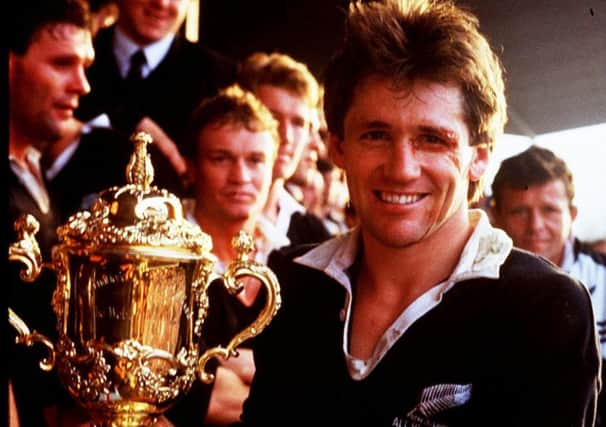Allan Massie: Scotland can go to Rugby World Cup with optimism


Well, the first World Cup was a success. By now the pressure on the game’s amateur status was intensifying. Rugby League was attracting more players, especially from Wales and Australia. It seemed that so many demands were being made on players’ time that the temptation to accept offers from professional rugby were greater than ever. Scotland was less affected but more than promising centre Alan Tait crossed to League soon after that first World Cup.
The decisive moment came, however, within a few months of the 1995 world cup in South Africa when Kerry Packer, the Australian TV mogul announced plans for what was termed a professional circus and began recruiting players, the Scotland captain Gavin Hastings emerging as one of his recruiting officers.
Advertisement
Hide AdAdvertisement
Hide AdIt was less than twenty years since Packer had transformed international cricket in the same way, signing up players and staging high-profile matches between an Australian XI and a World XI.Peace broke out only when the Australian Board of Control granted Packer TV rights for Tests in Australia.
The International Rugby Board, thoroughly and with good reason alarmed, responded by declaring the game open. Even so there were many who hoped that a compromise might be reached whereby players were permitted to capitalise on their fame by making rugby-related earnings but were not actually paid for playing. I remember Norman Mair, doyen of Scottish Rugby writers and for long The Scotsman’s chief rugby correspondent, saying: “We’ve had the best amateur game in the world, now let’s see if we can have the best semi-professional one.”
I hoped he might be right, but , sadly perhaps, the time when such a compromise might have been possible had passed. The game galloped towards professionalism.
“Staggered” rather than “galloped”might have been the word to describe what happened here in Scotland. There were fierce arguments about the best structure. Jim Telfer, as the SRU’s Director of Rugby , insisted we should build on the four Districts, Edinburgh, Glasgow, The South and the North-Midlands. Others wanted the leading clubs to become professional, as was already happening in England. There was a lot of ill-feeling and an absence in many quarters of a sense of what was realistically possible. I recall being proudly told by one official at a famous Edinburgh club that they had someone ready to invest a six-figure sum. In fact of course, a seven-figure one wouldn’t be enough, unless the first digit was much more than one.
Telfer bravely held his ground and had his way, even though it proved impossible for the SRU to finance as many as four professional clubs. It took time also for an effective trans-national league to be established, and it was almost twenty years before Scottish professional rugby was well established and our two pro-teams , Glasgow and Edinburgh, were fully competitive.
Now I suppose it’s impossible for many to imagine international rugby as an amateur game. Everything has changed. Commercial deals have been struck. Top players earn handsomely and work extraordinarily hard in order to do so.They also serve as animated bill-boards, even to the extent of wearing advertisements on the back of their shorts. This summer, the Scotland squad has already spent weeks in training camps preparing for the World Cup in Japan. It’s a far cry from the days when regulations prohibited teams from assembling more than a day or so before an international match. Rugby used to be a recreation; now, for professionals, it’s a career and for many of them there is still a good career in the game after they have retired from playing.Many former secretaries and committee-men of the old SRU must be birling in their graves. Far gone are the days when a player was told that if he exchanged his Scotland jersey with an opponent after an international he would have to pay for a new one to be worn in the next match –assuming he was picked.
Of course, most rugby is still amateur and devoted men and women still work many hours for their clubs without thought of financial reward but, at the top-level, rugby on and off the field is utterly different from when that first world cup was tentatively staged in 1987. Here in Scotland we long lagged behind, but now, for the first time since the first and second world cups, we can go to this year’s one with something more substantial than an optimism we have known deep down to be unreasonable.